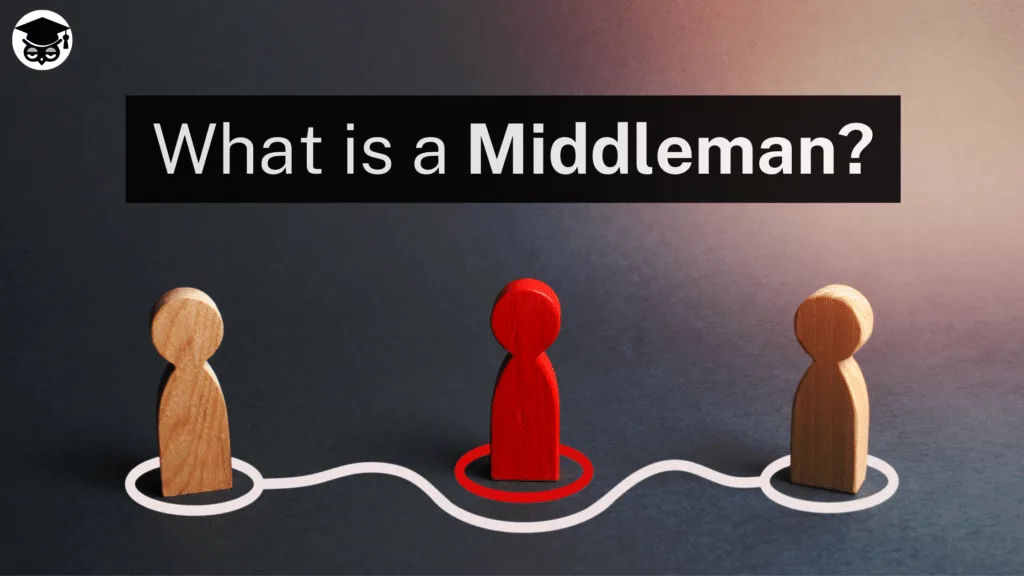What is a Middleman (in Crypto)?
A middleman is an institution, individual, or platform that connects different cryptocurrency users. Middlemen are also known as intermediaries.
The Long Definition
A middleman is an individual, institution, or platform that connects customers with each other. In this way, they are intermediaries that allow users to trade, borrow, and invest in cryptocurrencies. Crypto users can also exchange fiat for crypto, or vice versa, via middlemen.

The Role and Evolution of Middlemen in Crypto
Today, crypto exchanges like Binance are the most common form of intermediaries. But in the early days of crypto, these didn’t exist. Instead, Bitcoin users would meet in forums like Bitcointalk and plan P2P trades. This was the primary way for Bitcoin (BTC) holders to sell their crypto and for new users to obtain bitcoins.
However, at the time, these P2P trades were quite risky. There was always the possibility that the buyer would not pay the seller after they received the bitcoins. This created the need for a middleman – a platform or individual that would hold the seller’s crypto until the buyer released the funds.
The solution would arise in the form of the Bitcoin Market. Bitcoin Market was a website launched in 2010. It allowed users to buy and sell BTC via PayPal. It was the first true middleman in crypto. Buyers would purchase bitcoins by sending the seller money (in US dollars).
Meanwhile, the platform would hold the seller’s crypto in escrow until the seller received the money in their PayPal account. This prevented the buyer from running away with bitcoins without paying. That way, the middleman created trust in the system. This is the primary role that intermediaries have played in crypto ever since.
As Bitcoin became popular, more and more middlemen arose. Initially, these came in the form of marketplaces similar to the Bitcoin Market. These included Mt. Gox, which grew to become the largest bitcoin-fiat exchange in the world.
In the following years, new cryptocurrencies, like Ether (ETH), Litecoin (LTC), BNB, etc., were created. This created a demand for more sophisticated middlemen i.e., those that would allow users to swap between different crypto assets. The result was the rise of centralized exchanges like Binance, Kraken, and Coinbase.
Furthermore, cryptocurrencies have emerged as potent investment instruments. Therefore, there are those intermediaries that allow users to access investment opportunities in crypto. Each of these categories of middlemen will be looked at more closely in a later section.

How do Middlemen Work?
Crypto middlemen connect users on either side of a crypto transaction, trade, or investment. To do this, these middlemen typically take custody of the user’s crypto/funds. The investor stores their assets in a digital wallet belonging to the platform. In this way, most crypto middlemen are custodial platforms.
They are also centralized. This means they are privately owned and controlled by a central administration.
Types of Middlemen in Crypto
Middlemen generally fall under the following categories;
Crypto Exchanges
A crypto exchange is a platform where users can buy and sell crypto with fiat. It also allows users to trade between different cryptocurrencies.
Today, crypto exchanges are the biggest intermediaries in crypto. The most popular ones include Binance, Kraken, Bybit, and Coinbase.
Crypto Banks
Crypto banks are like traditional banks, only for crypto. They are institutions where users store cryptocurrencies for a long period of time. In exchange for storing crypto with the platform, the user receives interest in their savings.
Crypto Mutual Funds and Investment Trusts
These are middlemen that give investors exposure to crypto. Some, like ETFs, don’t require the user to buy the coins themselves. Instead, they track the prices of cryptocurrencies or the performance of companies invested in crypto and/or blockchain technology.
Mutual funds work by pooling investor money to purchase cryptocurrencies. Each investor is entitled to the gains made when the purchased assets increased in value. The size of their share is proportional to the size of their investment in the pool.

Pros and Cons of Middlemen
Pros:
- Streamline the business process: Middlemen make it easier for buyers to find sellers and vice versa. Without them, buyers and sellers would have a hard time finding each other.
- Economies of scale: Most people in crypto use middlemen like crypto exchanges. This has allowed these platforms to grow big. Thus, they typically enjoy economies of scale like increased liquidity. Therefore, their transaction fees tend to be much lower.
- Reduced risk of user-on-user fraud: With an intermediary, users can always be sure that the other party will fulfil their end of the bargain. For instance, if you’re selling crypto, your assets will only be released to the buyer once they’ve released payment.
Cons:
- Control: The user gives up control over their crypto by trusting it with the middleman. This exposes them to certain risks.
- Risks of loss: Middlemen require the user to store their crypto assets in a wallet controlled by the platform This carries a considerable risk of loss. The user may lose their funds due to hacks targeting the platform and mismanagement of user funds or fraud by the middleman.
